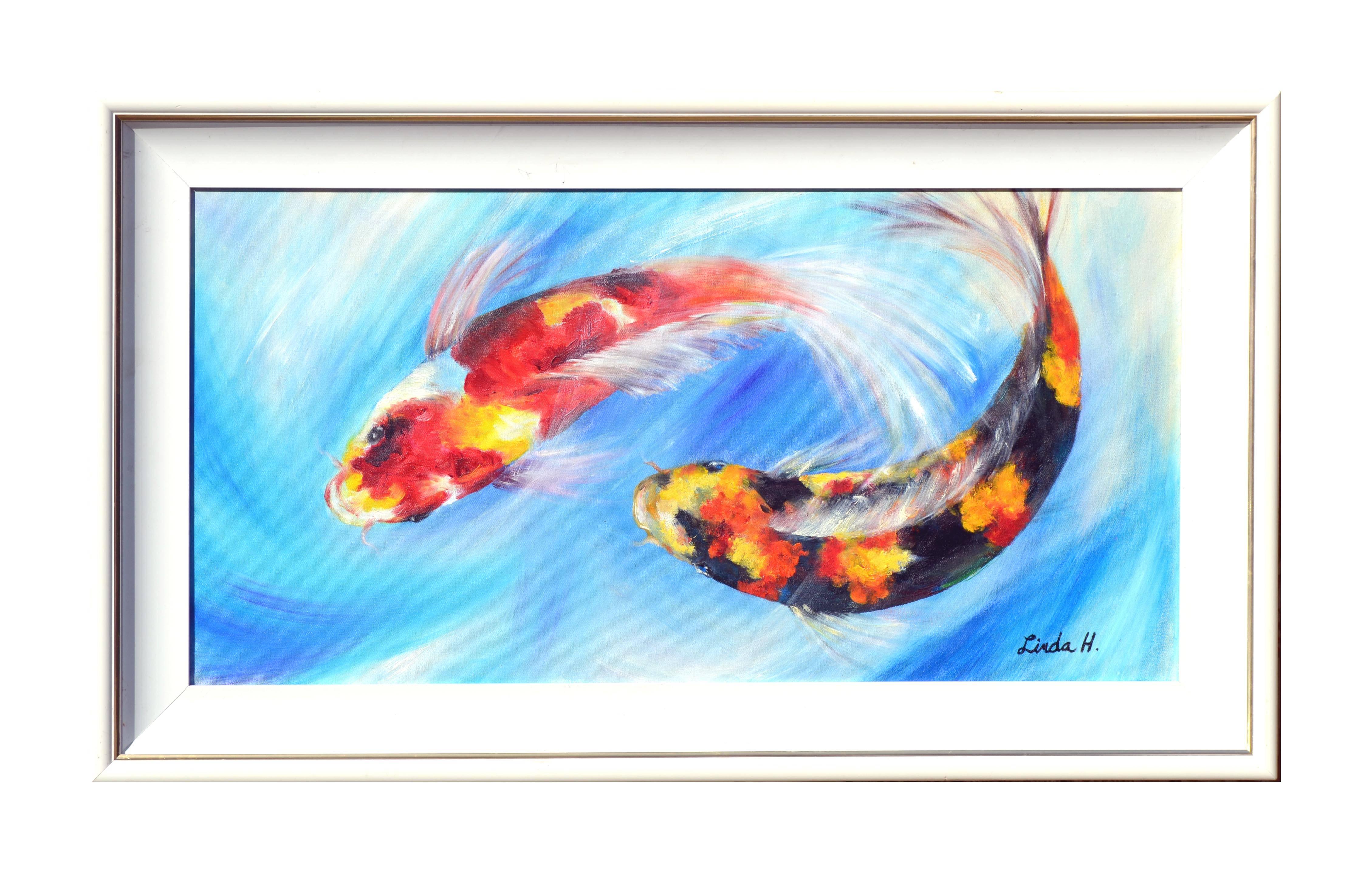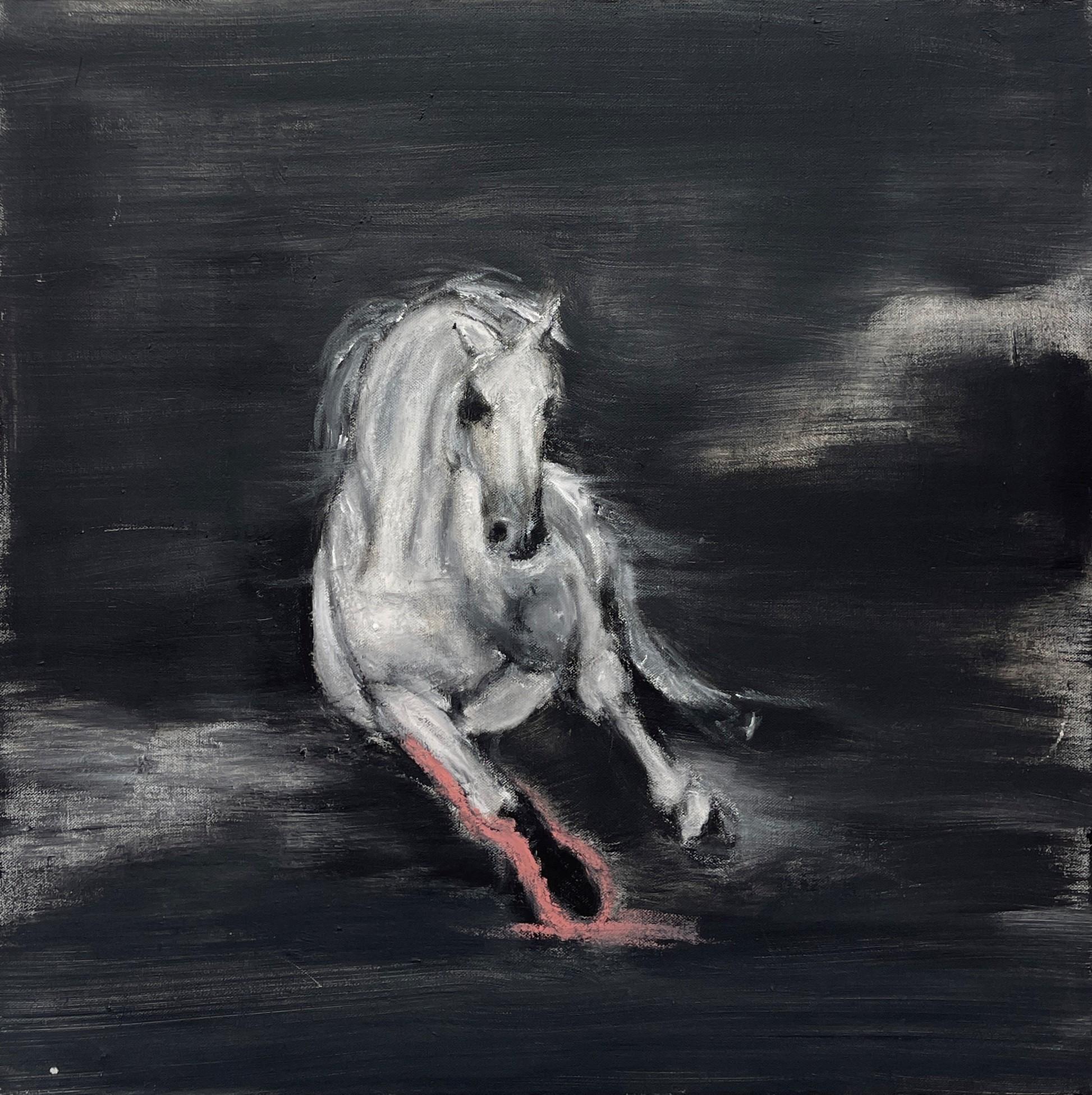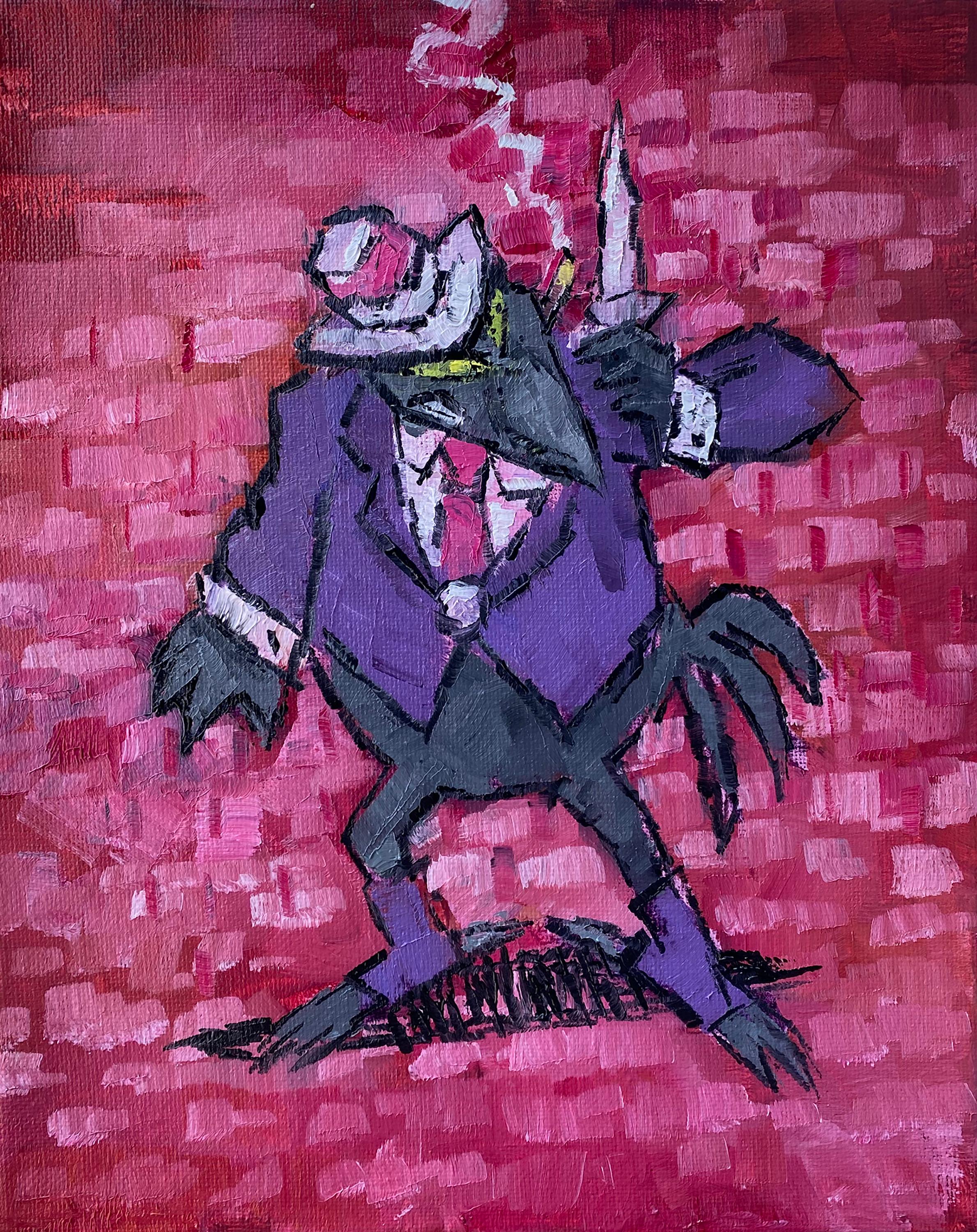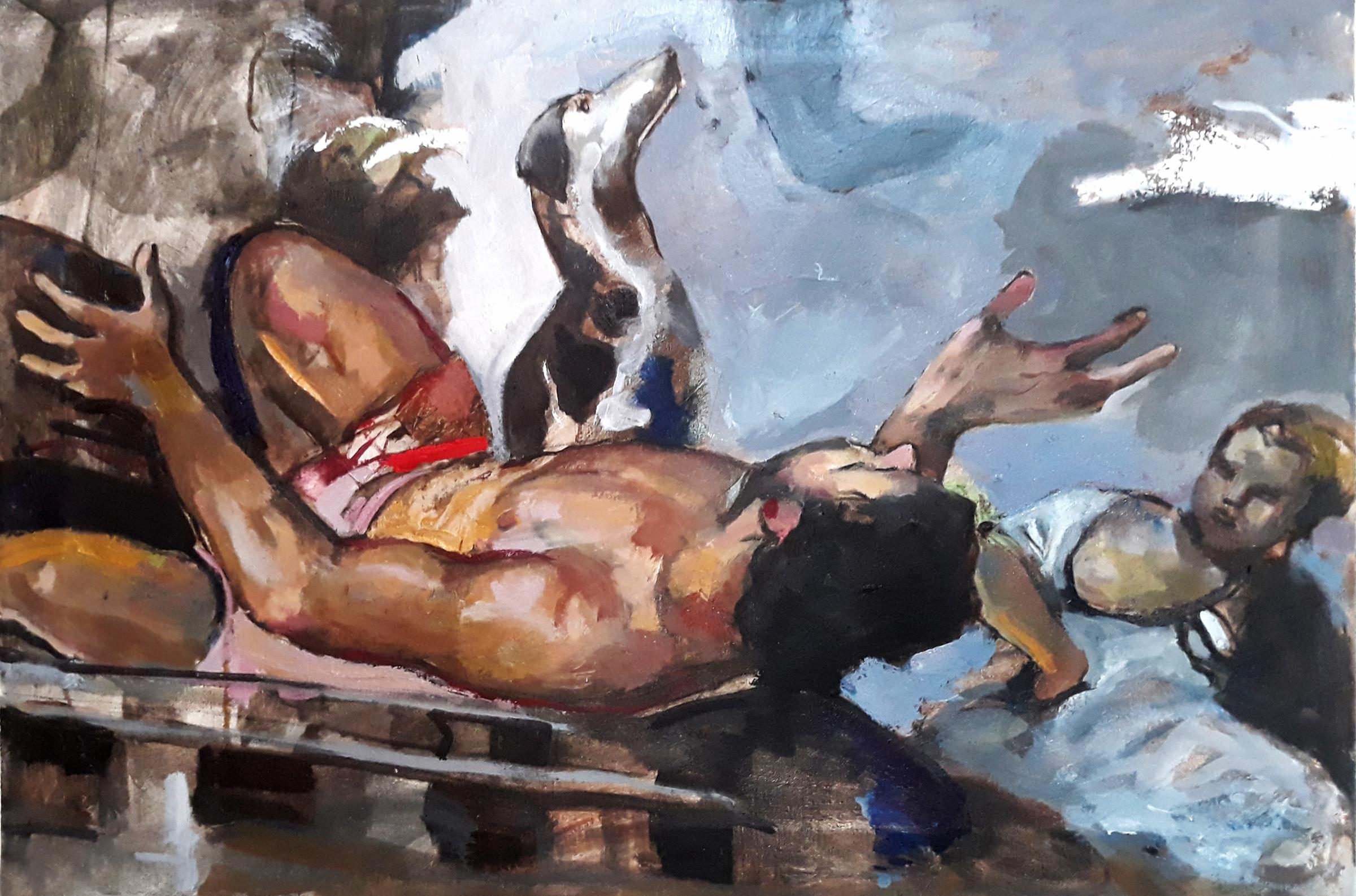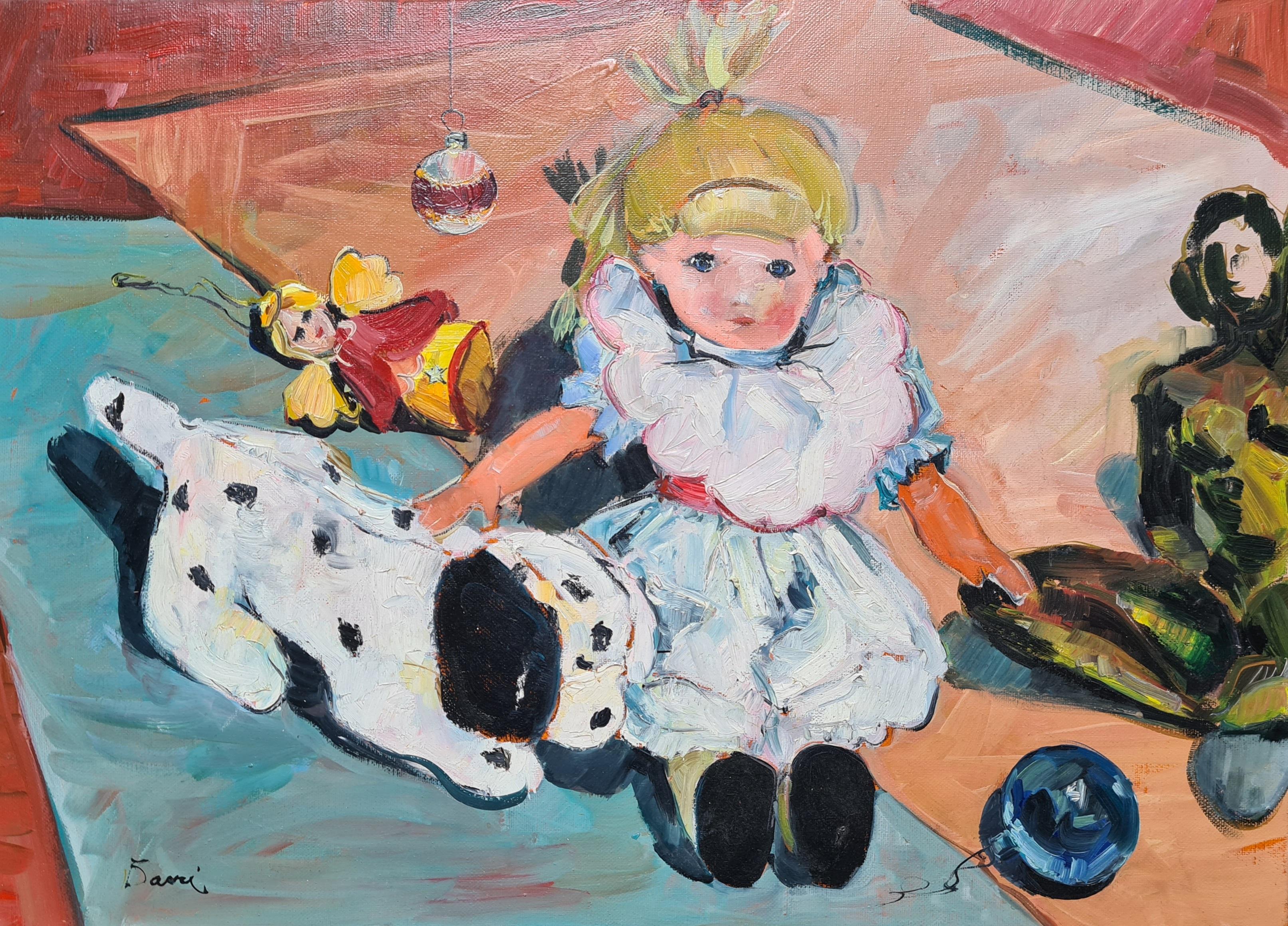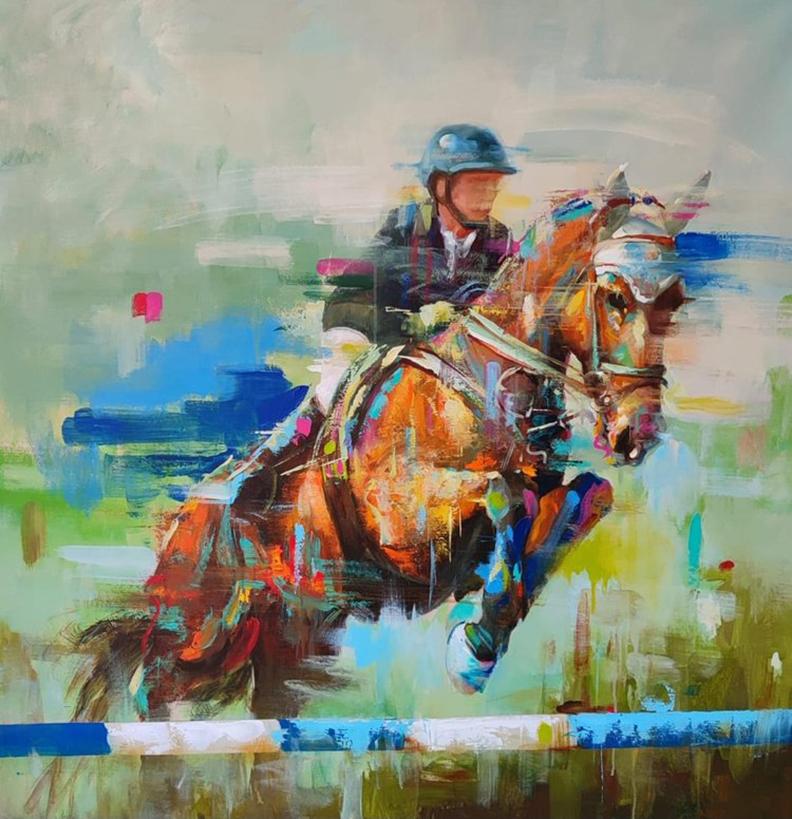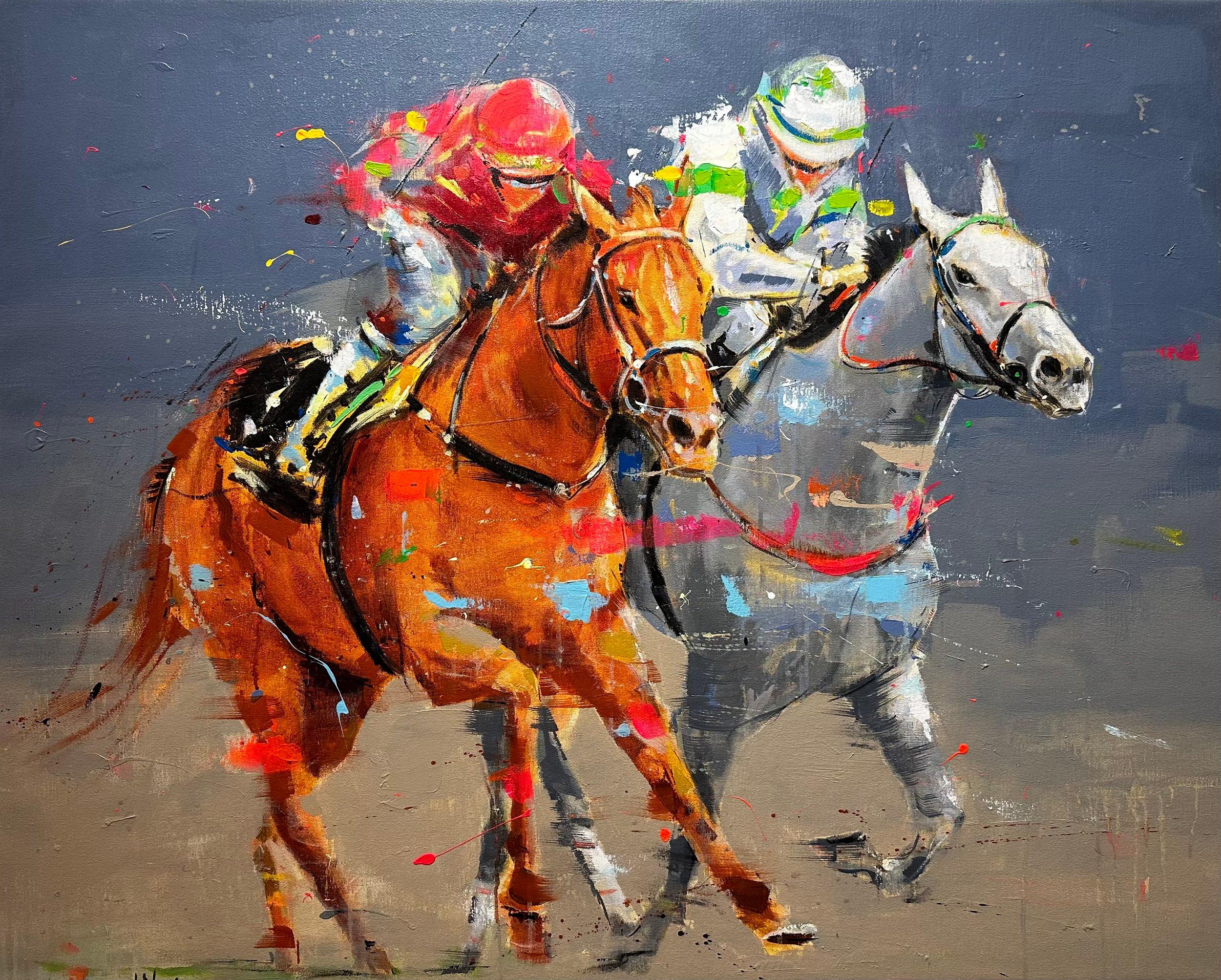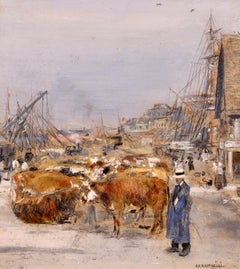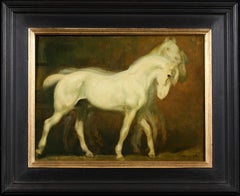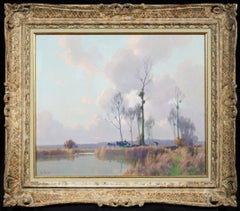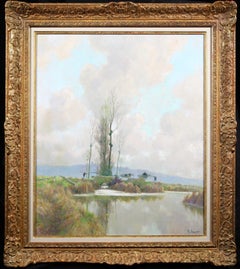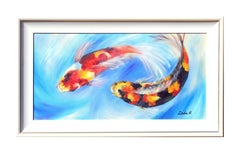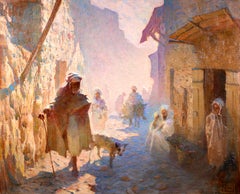
Under the Ramparts - Marrakech - Orientalist Figurative Oil by Adam Styka
View Similar Items
Want more images or videos?
Request additional images or videos from the seller
1 of 17
Adam StykaUnder the Ramparts - Marrakech - Orientalist Figurative Oil by Adam Stykac.1920
c.1920
$62,070.56List Price
About the Item
- Creator:Adam Styka (1890 - 1959, French)
- Creation Year:c.1920
- Dimensions:Height: 45 in (114.3 cm)Width: 54 in (137.16 cm)
- Medium:
- Movement & Style:
- Period:
- Condition:Very good original condition.
- Gallery Location:Marlow, GB
- Reference Number:Seller: LFA03171stDibs: LU415311507542
About the Seller
5.0
Gold Seller
Premium sellers maintaining a 4.3+ rating and 24-hour response times
Established in 2001
1stDibs seller since 2016
707 sales on 1stDibs
Authenticity Guarantee
In the unlikely event there’s an issue with an item’s authenticity, contact us within 1 year for a full refund. DetailsMoney-Back Guarantee
If your item is not as described, is damaged in transit, or does not arrive, contact us within 7 days for a full refund. Details24-Hour Cancellation
You have a 24-hour grace period in which to reconsider your purchase, with no questions asked.Vetted Professional Sellers
Our world-class sellers must adhere to strict standards for service and quality, maintaining the integrity of our listings.Price-Match Guarantee
If you find that a seller listed the same item for a lower price elsewhere, we’ll match it.Trusted Global Delivery
Our best-in-class carrier network provides specialized shipping options worldwide, including custom delivery.More From This Seller
View AllL'embarquement de boeufs - Impressionist Oil, Cattle by Jean Francois Raffaelli
By Jean-Francois Raffaelli
Located in Marlow, Buckinghamshire
Wonderful signed oil on panel cattle and figures in landscape by French impressionist painter Jean-Francois Raffaelli. The work depicts oxen being loaded onto ships in Honfleur, France en route to England.
Signature:
Signed lower right
Dimensions:
Framed: 18"x16"
Unframed: 9"x8"
Provenance:
Exhibition Jean Francois Raffaélli held at Galerie Simonson, 19 Rue Caumartin Paris - October 1929 (number 44)
Jean-François Raffaëlli's father was a failed Italian businessman and Raffaëlli himself was, among other things, a church chorister, actor and theatre singer. He then studied under Gérôme at the École des Beaux-Arts in Paris. He travelled to Italy, Spain and Algeria and on his return to France settled in Asnières.
In 1876, on a trip to Brittany, he first saw the potential of realist subject matter, if treated seriously. He became involved in meetings of artists at the Café Guerbois, where the Impressionist painters used to gather. As a result, Degas, contrary to the advice of the group, introduced Raffaëlli to the Impressionist exhibitions - according to one uncertain source as early as the very first exhibition, at the home of Nadar, and certainly to those of 1880 and 1881.
In 1904, Raffaëlli founded the Society for Original Colour Engraving. He first exhibited at the Salon de Paris in 1870 and continued to exhibit there until he joined the Salon des Artistes Français in 1881, where he earned a commendation in 1885, was made Chevalier of the Légion d'Honneur in 1889 and in the same year was awarded a gold medal at the Exposition Universelle. In 1906 he was made Officier of the Légion d'Honneur. He was also a member of the Société Nationale des Beaux-Arts. In 1884, a private exhibition of his work cemented his reputation.
He contributed to several newspapers such as The Black Cat (Le Chat Noir) in 1885 and The French Mail (Le Courrier Français) in 1886 and 1887. He published a collection entitled Parisian Characters, which captured his favourite themes of the street, the neighbourhood and local people going about their lives. In 1880 he participated, with Forain, on the illustration of Joris Karl Huysmans' Parisian Sketches (Croquis Parisiens). He also illustrated Huysman's Works. As well as working as an illustrator, he also made etchings and coloured dry-points.
His early attempts at painting were genre scenes, but once he was settled in Asnières he started to paint picturesque views of Parisian suburbs. From 1879 onwards, his subject matter drew on the lives of local people. These popular themes, which he treated with humanity and a social conscience, brought him to the attention of the social realist writers of the time such as Émile Zola. In addition to his realist style, Raffaëlli's dark palette, which ran contrary to the Impressionist aesthethic, helped to explain the opposition of those painters to his participation in their exhibitions. More concerned with drawing than colour, he used black and white for most of his paintings. Towards the end of his life, he lightened his palette, but without adopting any other principles of the Impressionist technique.
After painting several portraits, including Edmond de Goncourt and Georges Clémenceau, he returned to genre painting, particularly scenes of bourgeois life. Later in his career, he painted mainly Breton-inspired sailors and views of Venice. His views of the Paris slums and the fortifications, sites which have almost completely disappeared, went some way towards establishing a genre in themselves and perpetuated the memory of the area: The Slums, Rag-and-Bone Man, Vagabond, Sandpit, In St-Denis, Area of Fortifications. His realistic and witty portrayal of typical Parisian townscapes accounts for his enduring appeal.
Born in Paris, he was of Tuscan descent through his paternal grandparents. He showed an interest in music and theatre before becoming a painter in 1870. One of his landscape paintings was accepted for exhibition at the Salon in that same year. In October 1871 he began three months of study under Jean-Léon Gérôme at the École des Beaux-Arts in Paris; he had no other formal training.
Raffaëlli produced primarily costume pictures until 1876, when he began to depict the people of his time—particularly peasants, workers, and ragpickers seen in the suburbs of Paris—in a realistic style. His new work was championed by influential critics such as J.-K. Huysmans, as well as by Edgar Degas.
The ragpicker became for Raffaëlli a symbol of the alienation of the individual in modern society. Art historian Barbara S. Fields has written of Raffaëlli's interest in the positivist philosophy of Hippolyte-Adolphe Taine, which led him to articulate a theory of realism that he christened caractérisme. He hoped to set himself apart from those unthinking, so-called realist artists whose art provided the viewer with only a literal depiction of nature. His careful observation of man in his milieu paralleled the anti-aesthetic, anti-romantic approach of the literary Naturalists, such as Zola and Huysmans.
Degas invited Raffaëlli to participate in the Impressionist exhibitions of 1880 and 1881, an action that bitterly divided the group; not only was Raffaëlli not an Impressionist, but he threatened to dominate the 1880 exhibition with his outsized display of 37 works. Monet, resentful of Degas's insistence on expanding the Impressionist exhibitions by including several realists, chose not to exhibit, complaining, "The little chapel has become a commonplace school which opens its doors to the first dauber to come along."An example of Raffaëlli's work from this period is Les buveurs d'absinthe (1881, in the California Palace of Legion of Honor Art Museum in San Francisco). Originally titled Les déclassés, the painting was widely praised at the 1881 exhibit.
After winning the Légion d'honneur in 1889, Raffaëlli shifted his attention from the suburbs of Paris to city itself, and the street scenes that resulted were well received by the public and the critics. He made a number of sculptures, but these are known today only through photographs.[2] His work was also part of the painting event in the art competition at the 1912 Summer Olympics. In the later years of his life, he concentrated on color printmaking. Raffaëlli died in Paris on February 11, 1924
Museum and Gallery Holdings:
Béziers: Peasants Going to Town
Bordeaux: Bohemians at a Café
Boston: Notre-Dame; Return from the Market
Brussels: Chevet of Notre-Dame; pastel
Bucharest (Muz. National de Arta al României): Market at Antibes; Pied-à-terre
Copenhagen: Fishermen on the Beach
Douai: Return from the Market; Blacksmiths
Liège: Absinthe Drinker...
Category
1880s Impressionist Animal Paintings
Materials
Oil, Panel
Les Trois Chevaux - Modernist Animal Oil Painting by Louis Anquetin
By Louis Anquetin
Located in Marlow, Buckinghamshire
Signed oil on panel circa 1895 by French modernist painter Louis Anquetin. The piece depicts three white horses.
Signature:
Signed lower right
Dimensions:
Framed: 16.5"x20"
Unframe...
Category
1890s Modern Animal Paintings
Materials
Oil, Panel
Marecages en Seine et Marne - Impressionist Riverscape Oil by Alexandre Jacob
By Alexandre Louis Jacob
Located in Marlow, Buckinghamshire
Signed oil on canvas landscape circa 1940 by popular French impressionist painter Alexandre Louis Jacob. The piece depicts workers loading wood onto a cart being pulled by a white ho...
Category
1940s Impressionist Landscape Paintings
Materials
Canvas, Oil
Avant Printemps au Marais - Impressionist Riverscape Oil by Alexandre Jacob
By Alexandre Louis Jacob
Located in Marlow, Buckinghamshire
Signed oil on canvas landscape circa 1950 by popular French impressionist painter Alexandre Louis Jacob. The piece depicts horses and their carts being led across small stone bridges...
Category
1950s Impressionist Landscape Paintings
Materials
Oil, Canvas
The Great War - Impressionist Oil, Figure & Horse in Landscape by Andre Devambez
By André Devambez
Located in Marlow, Buckinghamshire
Wonderful oil on panel circa 1920 by French impressionist painter Andre Devambez. The work depicts a soldier leading his horse along a dirt track during...
Category
1910s Impressionist Animal Paintings
Materials
Oil, Panel
Les Insectes - Cubist Oil Painting by Andre Masson
By André Masson
Located in Marlow, Buckinghamshire
Signed, titled and dated cubist oil on canvas by French painter Andre Masson. The work depicts colourful insects.
Signature:
Signed lower right and titled and dated 1946 verso
Dim...
Category
1940s Cubist Animal Paintings
Materials
Canvas, Oil
You May Also Like
Two Koi
Located in Soquel, CA
Dramatic and colorful painting of two Koi. Circa 2000. Signed lower right corner "Linda H." Presented in white painted frame. Image size: 18"H x 36"W.
Category
Early 2000s Impressionist Animal Paintings
Materials
Canvas, Oil
$700 Sale Price
20% Off
"Bystander, " Oil Painting
By Louis Recchia
Located in Denver, CO
Louis Recchia's (US based) "Bystander" is an original, handmade oil painting on canvas.
About the Artist:
Louis Recchia has been producing contemporary art in Denver for over three...
Category
2010s Impressionist Figurative Paintings
Materials
Canvas, Oil
"Picasso's Mirror with Cat, " Oil Painting
By Louis Recchia
Located in Denver, CO
Louis Recchia's (US based) "Picasso's Mirror with Cat" is an original, handmade oil painting on canvas.
About the Artist:
Louis Recchia has been producing contemporary art in Denve...
Category
2010s Impressionist Figurative Paintings
Materials
Canvas, Oil
"Interior with Picasso, " Oil Painting
By Louis Recchia
Located in Denver, CO
Louis Recchia's (US based) "Interior with Picasso" is an original, handmade oil painting on canvas.
About the Artist:
Louis Recchia has been producing contemporary art in Denver fo...
Category
2010s Impressionist Figurative Paintings
Materials
Canvas, Oil
"Renoir's Boathouse with Silhouettes, " Oil Painting
By Louis Recchia
Located in Denver, CO
Louis Recchia's (US based) "Renoir's Boathouse with Silhouettes" is an original, handmade oil painting on canvas.
About the Artist:
Louis Recchia has been producing contemporary ar...
Category
2010s Impressionist Figurative Paintings
Materials
Canvas, Oil
"We are Star-Stuff, " Oil Painting
By Louis Recchia
Located in Denver, CO
Louis Recchia's (US based) "We are Star-Stuff" is an original, handmade oil painting on canvas.
About the Artist:
Louis Recchia has been producing contemporary art in Denver for ov...
Category
2010s Impressionist Figurative Paintings
Materials
Canvas, Oil
Recently Viewed
View AllMore Ways To Browse
Muller Ury
Nunziante Antonio
Orielle Caldwell
Paul Anthony Waplington On Sale
Peppino Mangravite On Sale
Peter Leath
Peter Max Andy With Mustache
Peter Peter Quidley
Phoebe Healey
Pjotr Constantin Stojanow
Poirier Mozzone
Robert Crowl
Rose Baumruker
Rudolph Wendelin
Sarah Rupp
Shawn Huckins
Suchitra Mattai
Ivan Reyes
